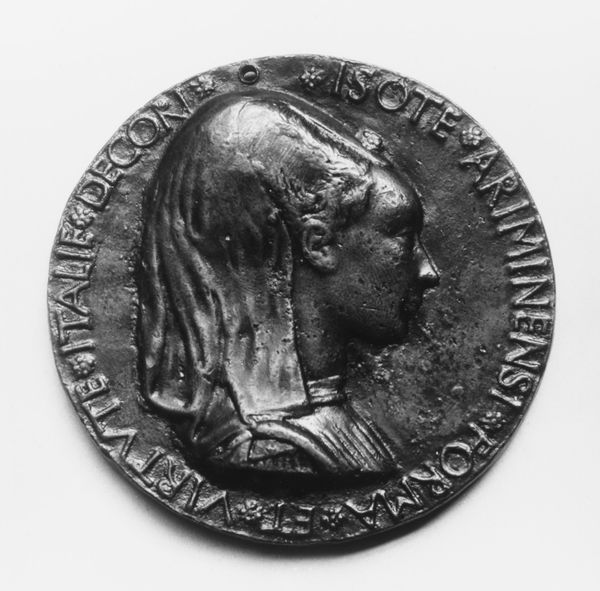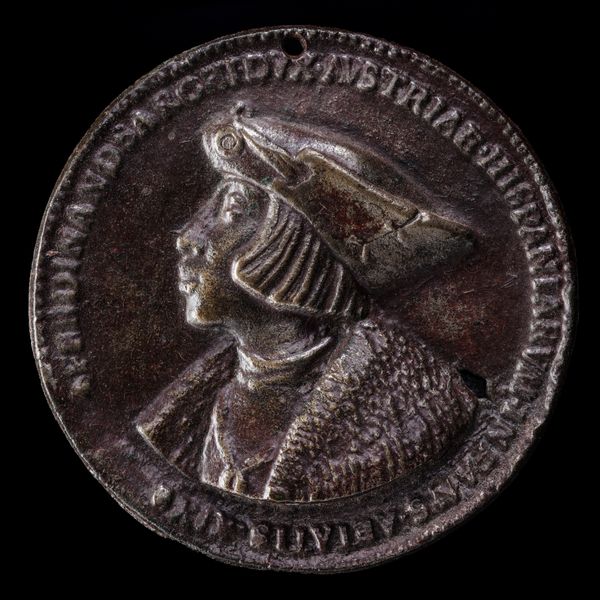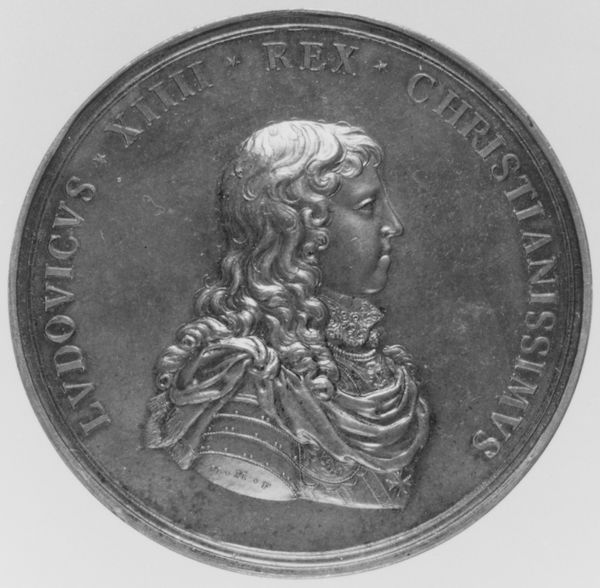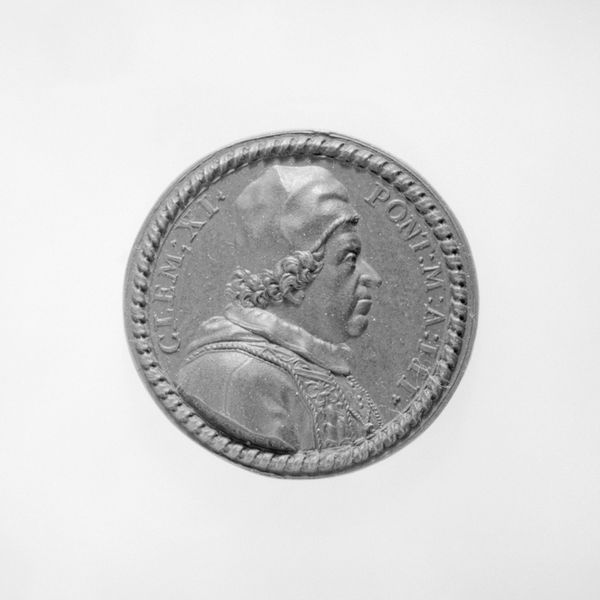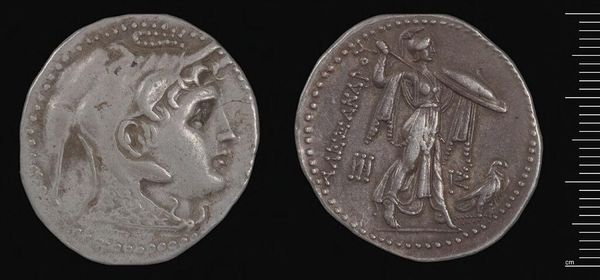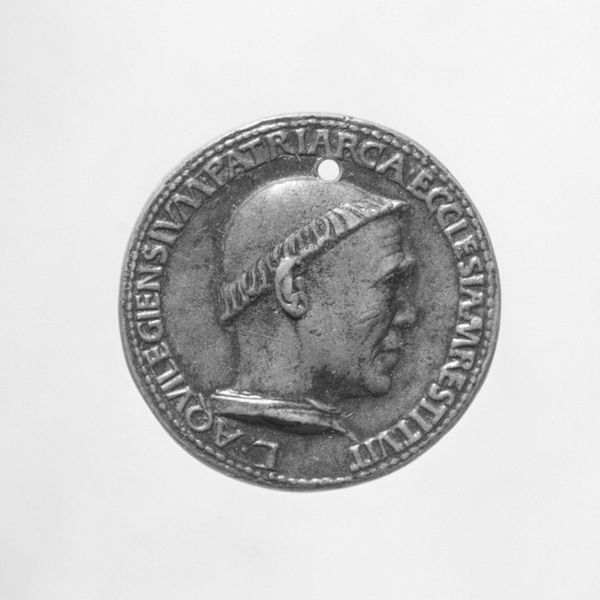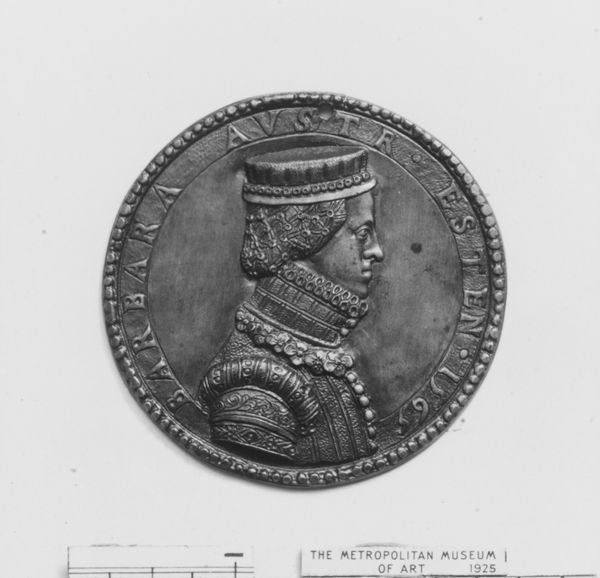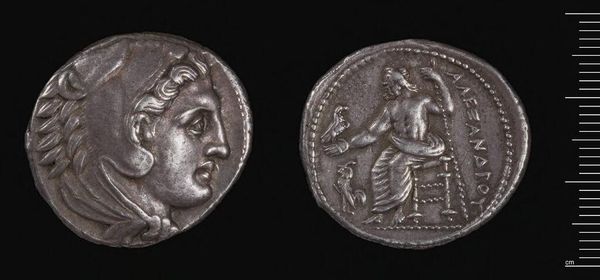
Portrait of Argentina Rangona (d. 1550) 1500 - 1550
0:00
0:00
relief, sculpture
#
portrait
#
medal
#
3d sculpting
#
sculpture
#
relief
#
11_renaissance
#
portrait reference
#
geometric
#
sculpture
#
decorative-art
Dimensions: Diameter: 2 1/2 in. (64 mm)
Copyright: Public Domain
Curator: This Renaissance portrait medal, created sometime between 1500 and 1550, depicts Argentina Rangona. The artist is known as Niccolo Cavallerino, and you can find this exquisite piece here at the Met. Editor: It feels so austere, doesn’t it? Like a queen hiding behind a very practical haircut. There's something almost comical about the severity of the geometric pattern contrasting with the delicate lace around her neck. It's like a nun attending a party! Curator: The austerity is interesting when considering the historical function of these medals. They weren't merely decorative; they served to immortalize a person’s image, conveying power and status to a wider audience beyond paintings or large-scale sculptures. Editor: That's it! It's calculated. Look at the profile, how stoic and unyielding, and that monumental hairdo framing the face, creating a sense of solidity...a fortress of personality. It makes me wonder, what was she really like, underneath all that armour? Was she a softy with a penchant for romantic poetry, doomed to play a part? Curator: We do know these medals often functioned as diplomatic gifts, tools for forging political and familial alliances in the complex web of Renaissance power. Editor: So she’s not just a woman, she's a pawn on the European chessboard! And her portrait serves as her proxy, travelling afar, sealing deals with a stony, unwavering glare. The more I look, the more I think the artist captures this so vividly, the weariness around her eyes, the hint of resignation at the corner of her lips. It’s all in the subtleties, really. Curator: Precisely! Niccolo was likely conscious of producing a very specific image to be reproduced and distributed widely. The impact goes far beyond personal likeness. The act of artistic creation in Renaissance times wasn’t entirely free but always responded to demands from patrons or powerful social influences. Editor: You’ve convinced me. At first, I just saw severe geometric patterns and a stiff hairdo. Now, I detect subtle cracks, a certain vulnerability fighting its way through. The perfect art piece is more interesting for what it hides rather than for what it shows. Curator: It serves as a reminder that behind every carefully crafted public image there are real human complexities at play.
Comments
No comments
Be the first to comment and join the conversation on the ultimate creative platform.
